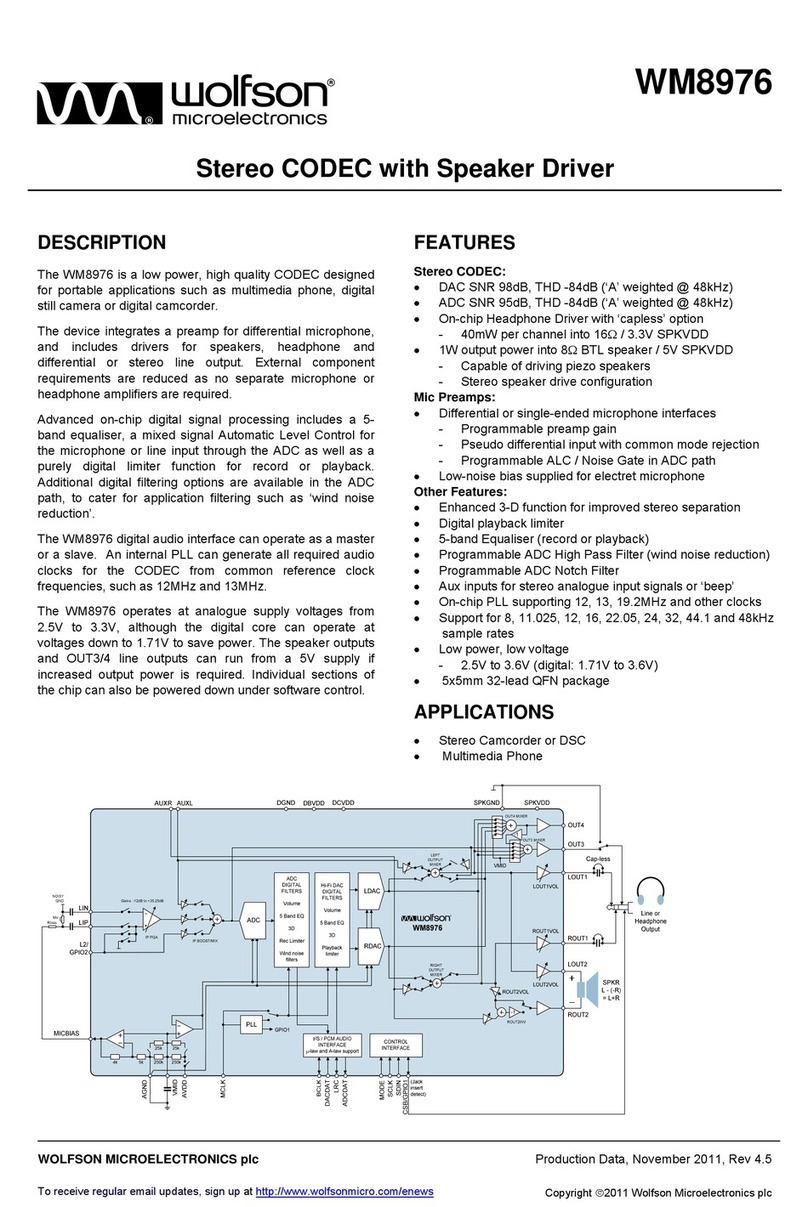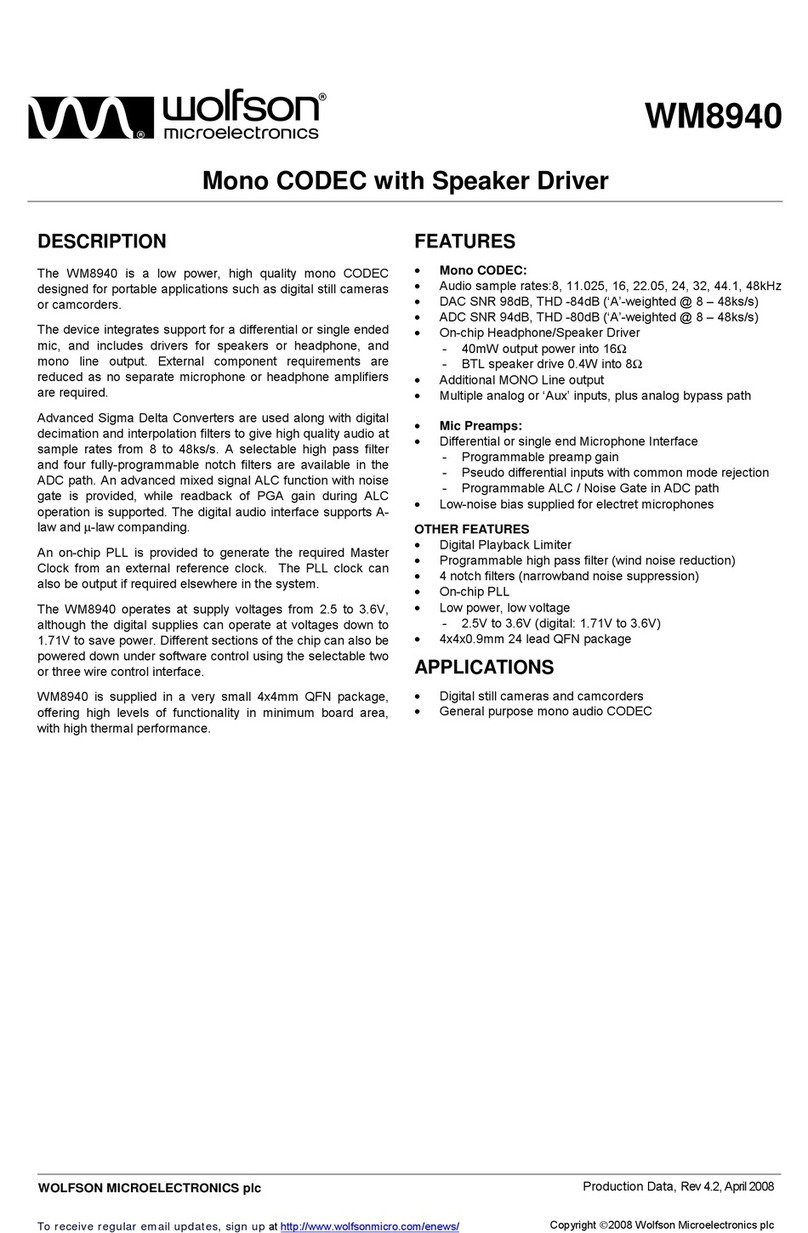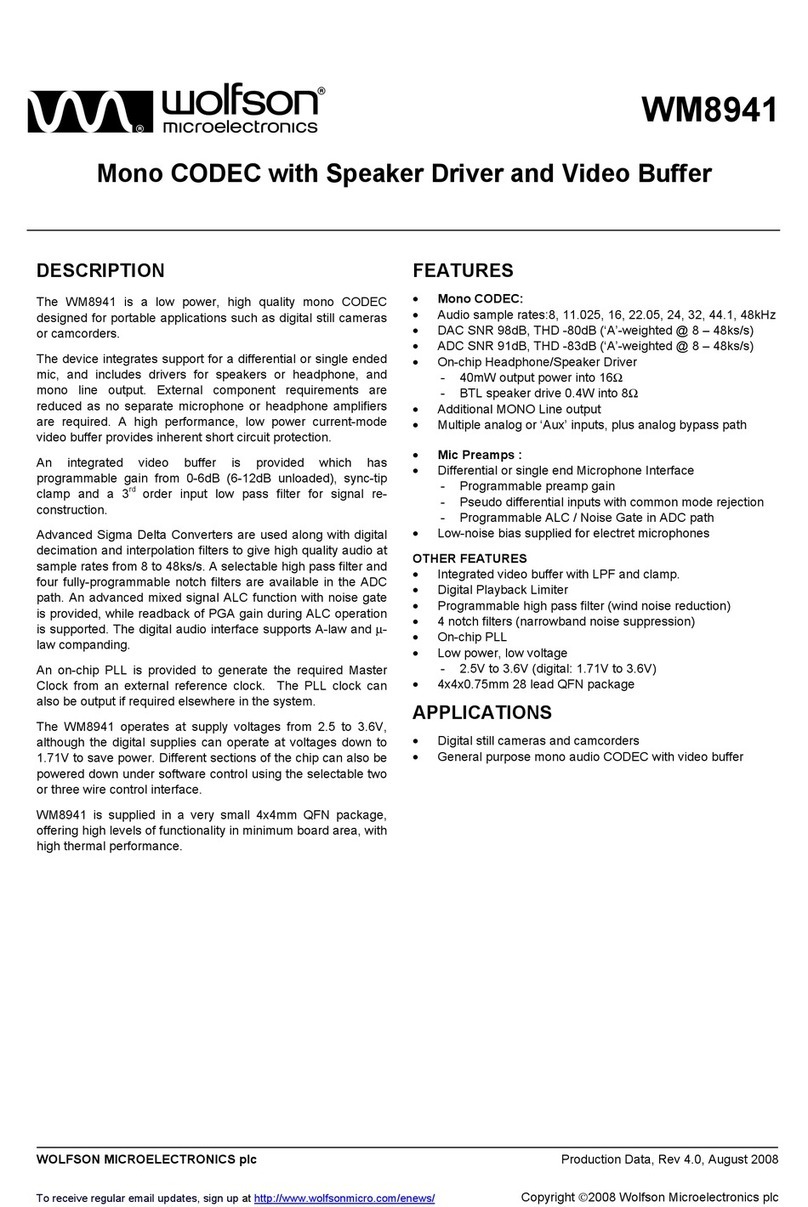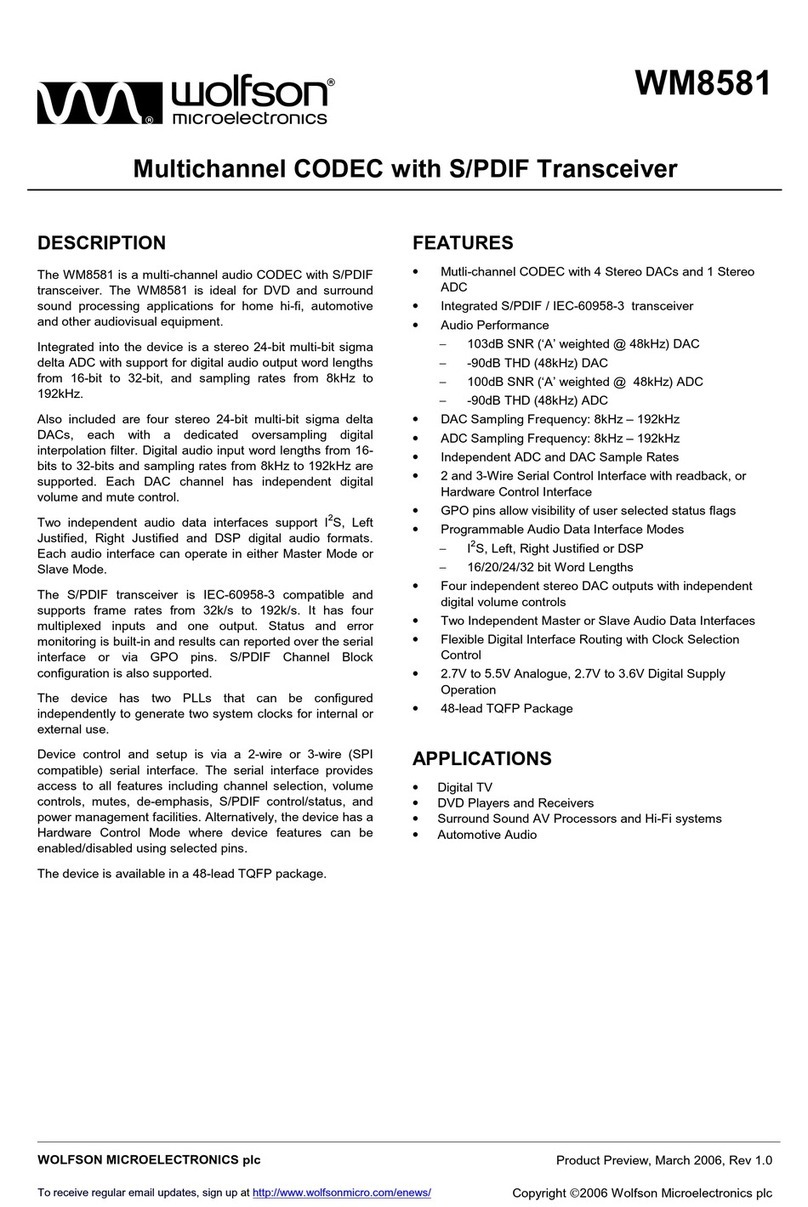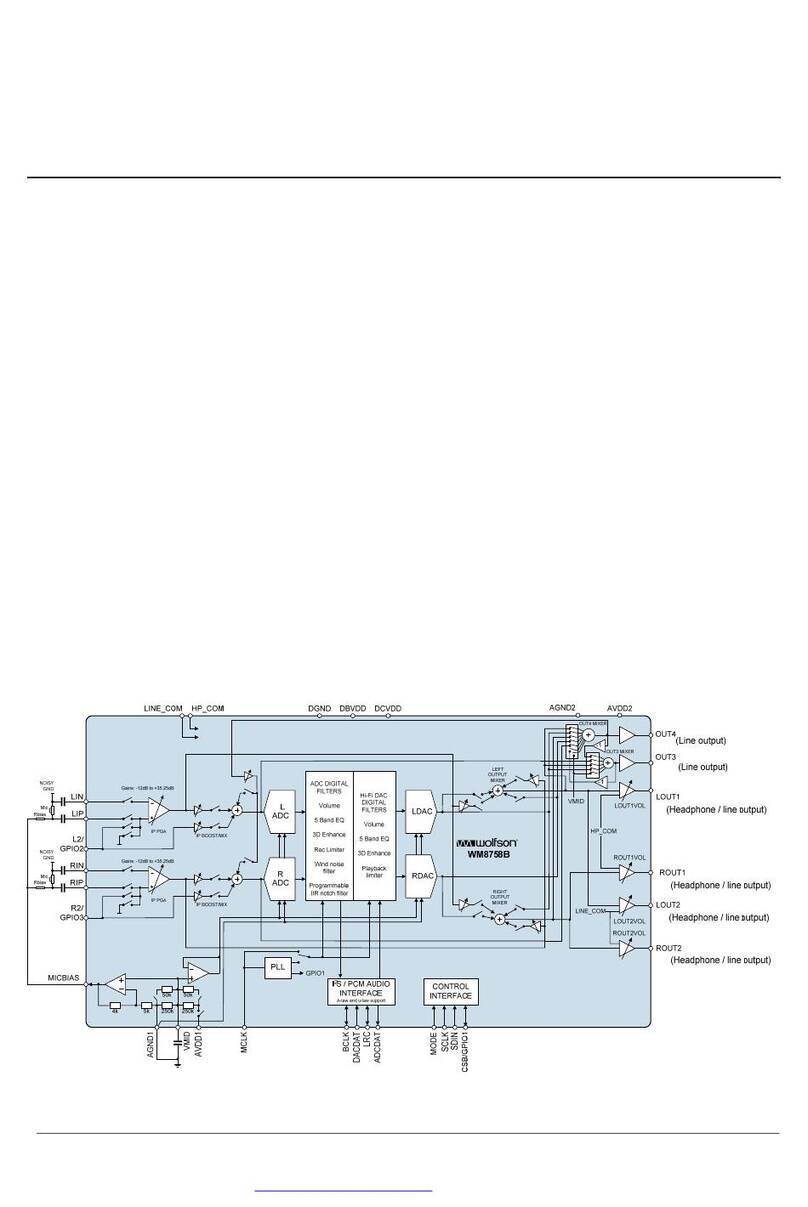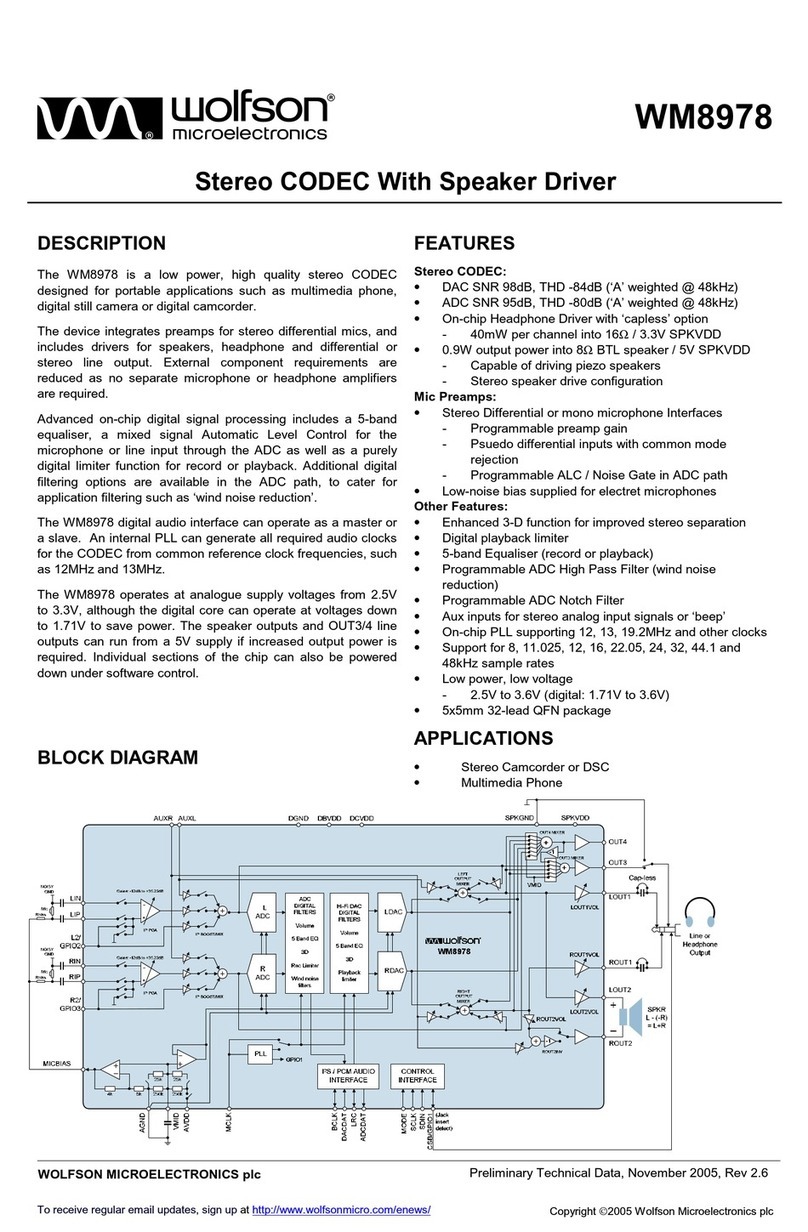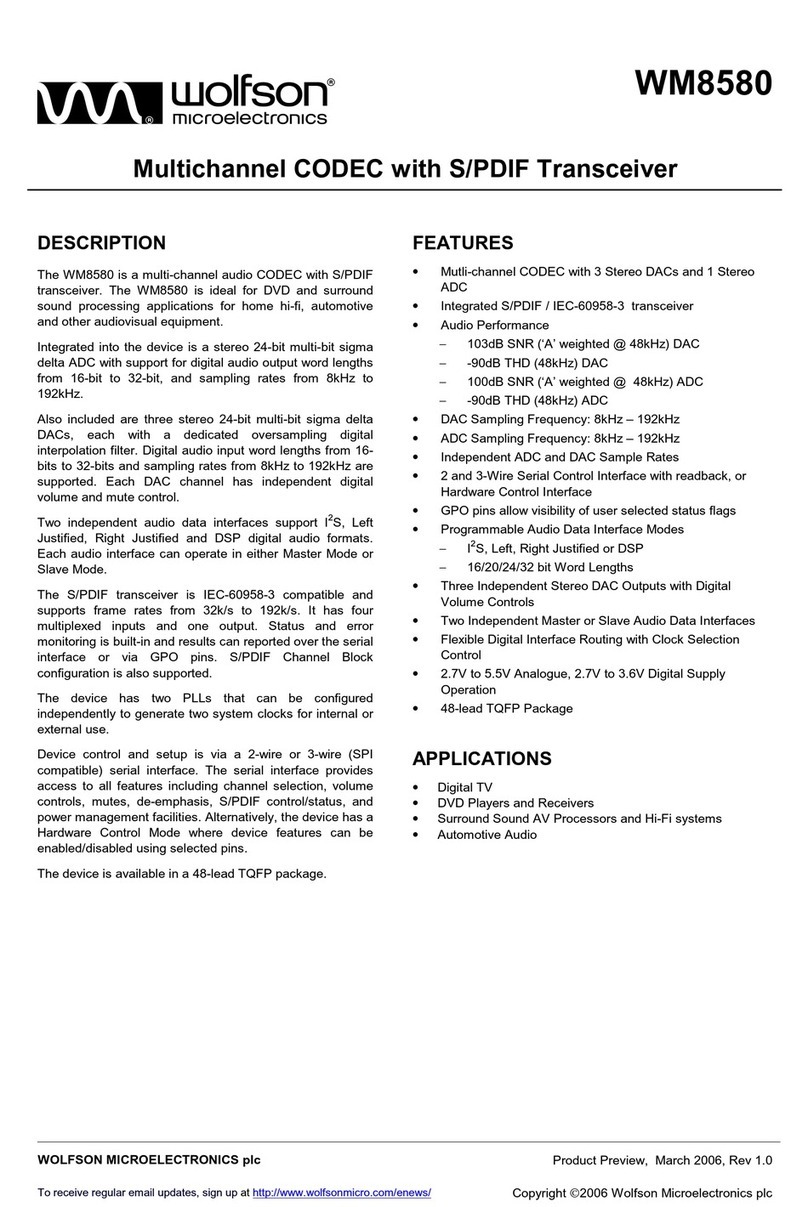
WM8978 Production Data
w PD, Rev 4.5, October 2011
2
TABLE OF CONTENTS
DESCRIPTION....................................................................................................... 1
BLOCK DIAGRAM ................................................................................................ 1
FEATURES............................................................................................................ 1
APPLICATIONS..................................................................................................... 1
TABLE OF CONTENTS......................................................................................... 2
PIN CONFIGURATION.......................................................................................... 4
ORDERING INFORMATION.................................................................................. 4
PIN DESCRIPTION................................................................................................ 5
ABSOLUTE MAXIMUM RATINGS........................................................................ 6
RECOMMENDED OPERATING CONDITIONS..................................................... 6
ELECTRICAL CHARACTERISTICS ..................................................................... 7
TERMINOLOGY ............................................................................................................ 10
SPEAKER OUTPUT THD VERSUS POWER...................................................... 11
POWER CONSUMPTION.................................................................................... 12
AUDIO PATHS OVERVIEW ................................................................................ 14
SIGNAL TIMING REQUIREMENTS .................................................................... 15
SYSTEM CLOCK TIMING ............................................................................................. 15
AUDIO INTERFACE TIMING – MASTER MODE.......................................................... 15
AUDIO INTERFACE TIMING – SLAVE MODE ............................................................. 16
CONTROL INTERFACE TIMING – 3-WIRE MODE ...................................................... 17
CONTROL INTERFACE TIMING – 2-WIRE MODE ...................................................... 18
INTERNAL POWER ON RESET CIRCUIT.......................................................... 19
DEVICE DESCRIPTION ...................................................................................... 21
INTRODUCTION ........................................................................................................... 21
INPUT SIGNAL PATH ................................................................................................... 23
ANALOGUE TO DIGITAL CONVERTER (ADC) ........................................................... 30
INPUT LIMITER / AUTOMATIC LEVEL CONTROL (ALC)............................................ 36
OUTPUT SIGNAL PATH ............................................................................................... 47
3D STEREO ENHANCEMENT...................................................................................... 54
ANALOGUE OUTPUTS................................................................................................. 54
DIGITAL AUDIO INTERFACES..................................................................................... 70
AUDIO SAMPLE RATES............................................................................................... 75
MASTER CLOCK AND PHASE LOCKED LOOP (PLL) ................................................ 75
LOOPBACK ................................................................................................................... 77
COMPANDING .............................................................................................................. 77
GENERAL PURPOSE INPUT/OUTPUT........................................................................ 79
OUTPUT SWITCHING (JACK DETECT)....................................................................... 80
CONTROL INTERFACE................................................................................................ 82
RESETTING THE CHIP ................................................................................................ 83
POWER SUPPLIES....................................................................................................... 83
RECOMMENDED POWER UP/DOWN SEQUENCE.................................................... 83
POWER MANAGEMENT .............................................................................................. 88
REGISTER MAP.................................................................................................. 89
REGISTER BITS BY ADDRESS ................................................................................... 91
DIGITAL FILTER CHARACTERISTICS ............................................................ 108
TERMINOLOGY .......................................................................................................... 108
DAC FILTER RESPONSES ........................................................................................ 109
ADC FILTER RESPONSES ........................................................................................ 109
HIGHPASS FILTER..................................................................................................... 110












